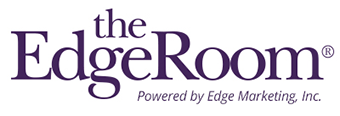For this month’s News with Edge article, Tanya Amyote has written about the importance of urchin tracking modules. Check out this quick clip of Tanya sharing a brief overview of the article with Amy Juers, and then read on for the full article!
In the fast-paced world of digital marketing, every click, share and engagement counts. Social media has become a vital tool for businesses to connect with prospects and clients, drive traffic to their websites and, ultimately, to boost the bottom line; however, tracking the effectiveness of your social media efforts on a more granular level can be difficult.
For example, if your ten latest posts on X and LinkedIn have all been pushing visitors to the same webinar registration page, how can you tell which post did the best job by getting the most clicks?
That’s where UTMs (urchin tracking modules) are an effective tool.
Understanding UTMs
UTMs are snippets of text added to the end of URLs that enable analytics tools to track specific details about where your traffic is coming from. UTMs can include information such as a campaign name, the source and the medium.
Let’s assume that Edge wanted to measure how many visitors to our About page came from a specific LinkedIn post. We would add UTMs to the end of the About page URL and use that full link in only that LinkedIn post.
For this example, here is what the complete URL with UTM could look like (with the URL underlined and the UTM parameters in blue for illustrative purposes):
https://edgemarketinginc.com/about/?utm_campaign=About&utm_medium=Post1&utm_source=LinkedIn
The performance of the UTMs could then be reviewed in the website’s analytics tools to determine how the performance of that post measures up to other initiatives pushing viewers to the same webpage.
The Importance of UTMs in Social Media Posts
- Accurate Attribution: UTMs allow you to pinpoint exactly which social media posts or campaigns are driving traffic to a specific webpage. Instead of relying solely on the basic analytics exports provided by social platforms, which aren’t even available in X anymore unless you’re a paid subscriber, UTMs give you granular insights into what is working and what isn’t.
- Campaign Performance: By tracking the performance of different posts within a campaign through UTMs, you can identify which channels or types of content resonate best with your audience. This information enables you to allocate your resources in a way that will yield the best proverbial “bang for your buck”.
- ROI Calculation: For businesses investing actual dollars into paid advertising on social media, UTMs provide a clear way to measure return on investment. They allow you to compare the cost of a campaign with the visits or conversions generated from that campaign, helping you determine its profitability and adjust your budget accordingly.
- Understanding Audience Behavior: Beyond just clicks and conversions, UTMs can offer more detailed insight into the behavior of those who choose to bite: Do they bounce quickly, or do they stay on your website and view other pages? If so, which ones caught their attention? You can then use this valuable intel to inform both your social media strategy and your overall digital marketing efforts.
Best Practices for Implementing UTMs
- Consistency: Establish a clear naming convention for UTMs to ensure consistency across campaigns and simplify reporting.
- Testing: Experiment to see what works best for your specific goals and audience.
- Regular Monitoring: Review UTM performance to spot trends, identify anomalies and make timely adjustments to your strategy.
In the dynamic world of social media marketing, applying UTMs in social media posts will offer meaningful insight into your audience’s behavior, enabling you to adapt your strategy in real time to attract more attention to your content.
About the Author
Tanya Amyote joined the Edge team in 2016, as marketing assistant, Excel enthusiast and token Canadian.
When not solving the world’s pivot table problems, Tanya is an avid reader, fountain pen user, and advocate for diversity, equity and inclusion.











